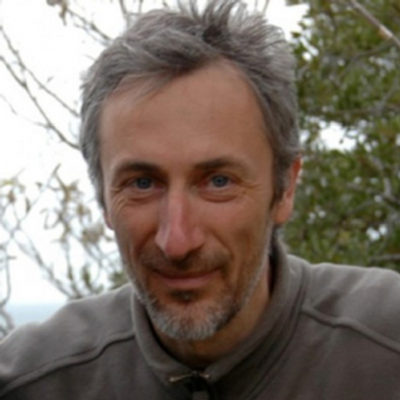
Corruzione legalizzata: massimizzare i profitti, minimizzando il rischio penale


28 giugno 2024
There are traces of pfas in the blood of citizens living near the Solvay chemical plant in Alessandria, and the closer you get to the factory, the higher the values increase. The news was announced on Thursday, 27 June, during a press conference organised in front of the Piedmontese city's prefecture by Greenpeace and local committees, which have been fighting for years to ban perfluoroalkyl substances, used to make everyday objects and considered harmful to humans and the environment.
The analyses involved 36 people living in the Spinetta Marengo area: in all of them the presence of pfas was found, which doctors consider to be endocrine disrupters, i.e. able to influence the change of hormones responsible for development, fertility, behaviour and other functions. "We ask President Alberto Cirio to come here and talk to us, if the institutions do not listen to us, who should protect us?" said the citizens attending the conference, who have been waiting almost four years for the analyses financed by the Region.
Tired of waiting, they decided to pay the 90 euros needed to find out whether the carcinogenic substances were present in their segue. And unfortunately, the results confirmed what they feared. 'We hoped to fall back on the Region's biomonitoring announced in 2021,' denounces Mirella Benazzo, referent of the citizen committee Anemos, 'but no one has ever been contacted.
'In a short time, we managed to get more adhesions than those collected by the regional sampling,' adds Giuseppe Ungherese, head of the NGO's Pollution Department, 'which shows how concerned the people living near the chemical plant are. The 36 blood samples were sent to Aachen University thanks to the coordination of Greenpeace Italy, which has been following pfas contamination in Italy since 2016, first in Veneto and then in other northern regions.
PFAS, thousands of people in Piedmont drank contaminated water, says Greenpeace
The examinations involved eight municipalities located within a ten-kilometre radius of the chemical plant, with the values increasing significantly in the vicinity of the plant and appearing to be related to age and gender, with adult males being the most affected by the bioaccumulation of pfas in the blood. In particular, all samples showed traces of pfas in excess of the limits set by the US National academies of sciences (Nas), which indicate 2 nanograms per millilitre as the maximum threshold not to be exceeded.
In five cases, even 20 nanograms per millilitre are exceeded. In Spinetta Marengo, a suburb that is home to Solvay's 130 hectares, the maximum value of 32 nanograms per millilitre was reached, of which 22.76 nanograms alone of the carcinogen pfoa, a substance that belongs to the pfas group.
"By means of a questionnaire, we asked citizens to explain what they know about pfas and the basic information about their families," Benazzo continues. "It emerged that on average, there is one case of cancer in each household, with up to four cases in a single family. It is also worrying that no general practitioner has ever spoken to his patients about pfas and the possible tests to be performed to understand whether or not the substances are present in the blood'.
The tests carried out in Alessandria follow a first round of analyses carried out in 2023 by the Belgian television network Rtfb. This time, the Alessandria committees involved activists from the Veneto region, who have been exposed to the largest pfas contamination in Europe since 2013, and asked the Veneto's Doctors for the Environment Isde association for help. The support of the Mamme No pfas and other activists was also important.
An IARC study confirms that PFOAs are carcinogenic and toxic
"I live in Lobbi, a few kilometres from Alessandria, and I lost my father and husband to cancer. I had my well, which I use to irrigate my vegetable garden, analysed and high values of pfas were found. What do I have to do to protect my health?" asked a resident who underwent the test. Thanks to the test, the woman discovered that the pfas values in her blood exceeded 20 nanograms per millilitre.
The analysis conducted by the University of Aachen, unfortunately, could not measure the two pfas produced and patented by Solvay Syensqo and its previous owner Ausimont: cC6O4, and the ADV mixture. Both, in fact, are only available for research in environmental matrices, including drinking water, and not for blood.
As for ADV, it is analysed worldwide by only two institutions: the Policlinico di Milano – which since 2021 has been Solvay's labour clinic and which finds up to 3 milligrams per litre in the blood of workers (3 million times higher than the 2 nanogram threshold) – and the Regione Piemonte, which in the only biomonitoring carried out so far on farmers who feed on products grown near the chemical hub, indicated an average of 15 micrograms per litre (a thousand times higher than the threshold).
According to the Piedmont Region, pfas produced by the Alessandria chemical plant reaches the blood of residents through food, which is in turn contaminated by emissions from the plants' chimneys. In the meantime, Amag Reti idriche – the company that manages the drinking water network of the eight Alessandria municipalities affected by these new blood tests – to lavialibera 's specific question on the presence of pfas in Spinetta Marengo's drinking water, replied that 'the values are all below the limits that will come into force in January 2026'.
The manager, who until November 2023 had never found traces of pfas, now believes that they are in fact there, albeit with values below 100 nanograms per litre, i.e. the threshold imposed by the new drinking water directive from 2026.
La tua donazione ci servirà a mantenere il sito accessibile a tutti
La tua donazione ci servirà a mantenere il sito accessibile a tutti

